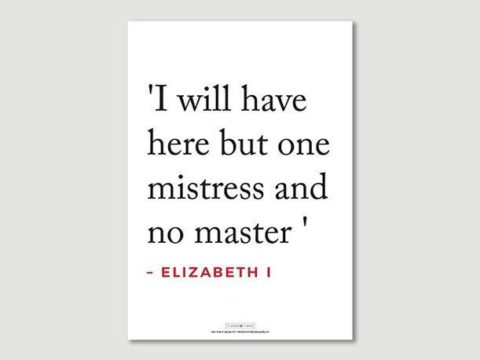Mary Sidney: Life Story
Chapter 7 : Widowed
In early January 1601 William was again summoned to court, and was told by Sir Robert Cecil that failure to appear would forfeit the queen’s regard. He responded, pleading with Cecil to excuse him to Elizabeth. His father could not live much longer, and only his son’s presence comforted him. Besides that, William was worried that Pembroke was losing his grip on financial matters. One day when William was absent, his father had given away £600.
Elizabeth was further offended when Sir Robert Sidney left the court without leave, to visit his sick brother-in-law, and had to be placated via Cecil. There is no information as to whether Mary was present at her husband’s side. None of the extant letters referring to this last illness mention her.
A number of William’s letters suggest that he was worried about money. Given Elizabeth’s general reluctance to pay her ministers, it is probable that Pembroke had spent vast quantities of his own cash as Lord President. A letter dating from shortly after Pembroke’s death passed on the gossip that he had left everything, including Mary’s jewels, to William, but this is an unfair slander. His will was clear. After leaving his soul to God, he directed that he should be buried without undue ceremony in Salisbury Cathedral, with only his wife, children and household wearing mourning. His executors were then to maintain Mary, his children and his servants in the house in which he died for twenty-eight days. He left several charitable bequests, including £100 for the poor of Salisbury to help them find work.
Mary’s bequest was a life interest in 3,000 marks’ (c.£2,000) worth of jewels, plate and household furnishings, for as long as she did not remarry. She could also retain the use of all the household items at Wilton until William (or Philip, if William died, or his daughters, in the event of both brothers dying), reached his majority. Mary was also to have the use of the Ivychurch estate until her death or remarriage and of Devizes Park for life. Philip was to receive 10,000 marks and the reversion of Devizes Park. Anne had £3,000 to be paid on her marriage, provided she married with Mary’s consent, or when she reached eighteen (the sum was increased in a codicil). Dr Moffet received an annuity of £100, provided he continued to supply his medical services to Mary and her sons.
In the will itself, Mary was required to enter a bond of £6,000 with two other sureties for the return of the household effects to William on her death or remarriage, but, presumably as a gesture of good faith in his wife, the codicil cancels that requirement, requiring that the
‘said Lady Mary shall give none other bond than her own, for the true performance of the same and that no further security in that behalf, shall be of her by my executors demanded.’
As well as the estates in which Pembroke gave her an interest until she remarried, she had a life interest in several other Pembroke estates, in satisfaction of the dower arrangements made at the time of her marriage. These included the borough and castle of Cardiff.
Whilst Rowland Whyte had been dismissive of William in 1599, a year later, he thought the young man much improved. He wrote to Sidney that William had been practising hard in the tiltyard at Greenwich, describing him thus ‘he leaps, he sings, he gives counterbuffs, he makes his horse run with more speed.’
At some uncertain point (the letter is not dated) Mary wrote a letter to the queen, thanking her for her interest in William. Where Pembroke’s correspondence had been brief and to the point, Mary’s is florid in the extreme – almost unreadable. It is very similar in style to some of Elizabeth’s own ornate letters, suggesting that it was a conscious literary style that both had been taught. A short excerpt is quite enough (modernised spelling):
‘And for mine own part remembering (what is of dearest memory) how in my youngest times my self was graced by the same heavenly grace, the same sun which ever more hath powers to perfect the greatest imperfection, give me leave, humbly, I beseech Your Majesty to unfold my comfort, hitherto withheld in the prison of my heart and now ever with tears of joy thus to pour forth my joyfulness finding that unspeakable goodness so begun in me, continued in mine.’
But William was soon in disgrace. It was discovered within a few weeks of his father’s death, that he had been having an affair with Mary Fitton, one of Elizabeth’s maids-of-honour, who was now pregnant. William refused point-blank to marry her. Elizabeth, who was always severe on immorality, had him sent to the Fleet prison. Mary Fitton, who had already been the subject of scandal when the elderly Sir William Knollys had pursued her, despite already being married, bore a still-born child. She went on to have an extremely colourful love life.
William was released from prison, but not permitted to return to court. He remained at Baynard’s Castle, writing supplicating letters to Cecil, about how being ‘…banished from the sight of her (Elizabeth) in whose favour the balance consisted of my misery or happiness and whose incomparable beauty was the only sun of my little world….’ Clearly, he had been taking lessons in high-falutin letter-writing from his mother.
Elizabeth was unimpressed – or perhaps Cecil neglected to pass on his messages. At the end of the summer of 1601, William was in Wiltshire. He wrote pleading letters, requesting the queen to change her mind about assigning the Forest of Dean to Mary Fitton’s father as recompense, and, when that failed, to be permitted to go abroad. He was eventually allowed to do so, but there is no record of where he went, or how long he stayed.
Lady Mary Sidney
Family Tree
